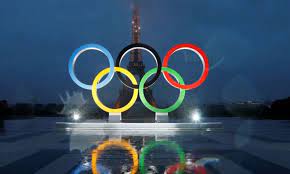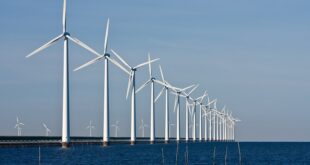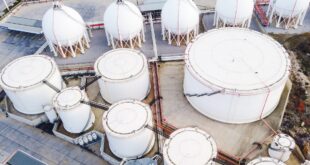For the Qatar 2022 World Cup, the government promised to make the tournament as green as possible through green public transport, massive recycling efforts and reusable venues. However, many questioned whether it would ever be possible to make a World Cup being held in the desert truly green, as it required air-conditioned stadia and vast amounts of water and other amenities for the influx of tourists. Now, the French government is aiming to make the 2024 Paris Olympics greener than ever, which it hopes will contribute to a long-term green transition in the French capital.
There is increasing pressure to make major international sporting events greener and create less waste, as governments and international organisations push for a global green transition. However, creating a green event on a massive scale is easier said than done. Preparing for a massive influx of tourists and building venues fit for a wide range of sporting events typically produces a huge quantity of greenhouse gas emissions. But Paris believes it can prepare for the Olympics in a greener way, as well as massively cut emissions.
Around 10,500 athletes typically attend the Olympics, as well as 15 million spectators. This level of tourism takes its toll on the environment. Most visitors arrive by plane, which burns polluting jet fuel. In addition, most Olympic games are held in locations that are unprepared for the event, meaning they must invest in the construction of large venues, tourist accommodations and other critical infrastructure. This has led many environmentalists to call for the Olympics to be held in existing venues worldwide. But Paris thinks it can do it differently.
The organisers have stated that the games will produce no more than half of the greenhouse gas emissions of recent Olympic Games. To achieve this, the organisers are considering all the components involved in the games, from electricity and food to buildings and transportation. There will be no giant, diesel-fuelled generators at sporting venues, which will mainly run off electricity produced from solar and wind sources.
The repurposing of existing buildings across the city is expected to have a huge impact on carbon emissions. The event organisers are planning to build far fewer new venues and, instead, will renovate existing buildings, such as the Grand Palais, the Concorde Plaza and a swimming pool built for the 1924 Paris Olympics. The few new buildings being developed, including athletes’ housing, a swimming complex and an arena, will be constructed using more wood and less cement and will be fitted with solar panels. In addition, the organisers plan for these buildings to be used long-term, as community spaces, rather than for a single sporting event.
There are some controversial plans for the Olympics, such as providing athletes’ village buildings with a cooling system using water from underground, rather than air conditioning. This has led some Olympic teams to consider bringing their own air-conditioners. After the event, the 128-acre Athletes’ Village is expected to be repurposed into a mixed neighbourhood for 6,000 residents.
Paris has been rapidly expanding its bike lanes and reducing space for cars, aimed at reducing emissions and making more space for pedestrians and cyclists. The government has also planted thousands of trees across Paris to help decarbonise the city and provide shelter to residents and visitors in the hot summer months. The Mayor of Paris, Anne Hidalgo, has spent her last five years in office trying to transform Paris into a greener city. Hidalgo explained, “What we’ve undertaken is a whole program of adaptation, of putting nature back in this city… We’re trying to build this around the individual.”
There is great optimism around the potential for a greener Olympic Games in Paris. However, promises have been made by sports event organisers and governments before that have not come to fruition. In 2022, Qatar promised to reduce the carbon footprint of the World Cup by using renewable energy, developing buildings that could be reused, and carrying out massive recycling and other green schemes. However, it has been widely criticised for its excessive carbon emissions. Because of Qatar’s intense heat, even in the winter months, giant stadia were fitted with air conditioning. Further, travel contributed around half of the World Cup’s carbon footprint, with many tourists having to stay in neighbouring countries and fly to the games, as Qatar is too small to accommodate the influx of tourists.
Before the World Cup, several professional players signed an open letter to FIFA stating “The tournament has been labelled as the first ‘fully carbon neutral FIFA World Cup tournament,’ meaning its overall impact on the planet should be zero… But that’s not true.” It went on to say, “In reality, FIFA’s sustainability strategy for the Qatar World Cup rests on flawed carbon calculations, questionable offsetting practices, and shifting the responsibility onto fans rather than shouldering it themselves.” The letter called for FIFA to ditch the “carbon neutral” label to avoid greenwashing and call for organisers to work harder to reduce emissions in the future.
Now, all eyes are on Paris to see if the city will be able to massively reduce the carbon emissions associated with the Summer Olympic Games. This will be no easy feat, but the repurposing of buildings, incorporation of renewable energy sources into venues, and other green initiatives will help the organisers achieve their goal.

 Iran Energy News Oil, Gas, Petrochemical and Energy Field Specialized Channel
Iran Energy News Oil, Gas, Petrochemical and Energy Field Specialized Channel



